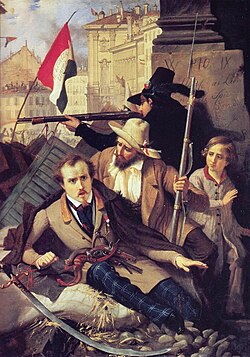Museo nazionale del Risorgimento italiano | |
 | |
| Established | 1878 |
|---|---|
| Location | Turin, Italy |
| Coordinates | 45°04′09″N7°41′06″W / 45.0691°N 7.6851°W |
| Type | Historical and military museum |
| Collections | period spanning from the Siege of Turin (1706) to the foundation of the Italian Republic (1946) |
| Visitors | 150,000 (2016) |
| Director | Umberto Levra |
| Website | www.museorisorgimentotorino.it |
The National Museum of the Italian Risorgimento (Italian : Museo nazionale del Risorgimento italiano) is the first, the biggest and the most important among the 23 museums in Italy dedicated to the Risorgimento; and the only one which can be considered "national" according to a 1901 law, and due to its rich and great collections. It is housed in the Palazzo Carignano in Turin.


